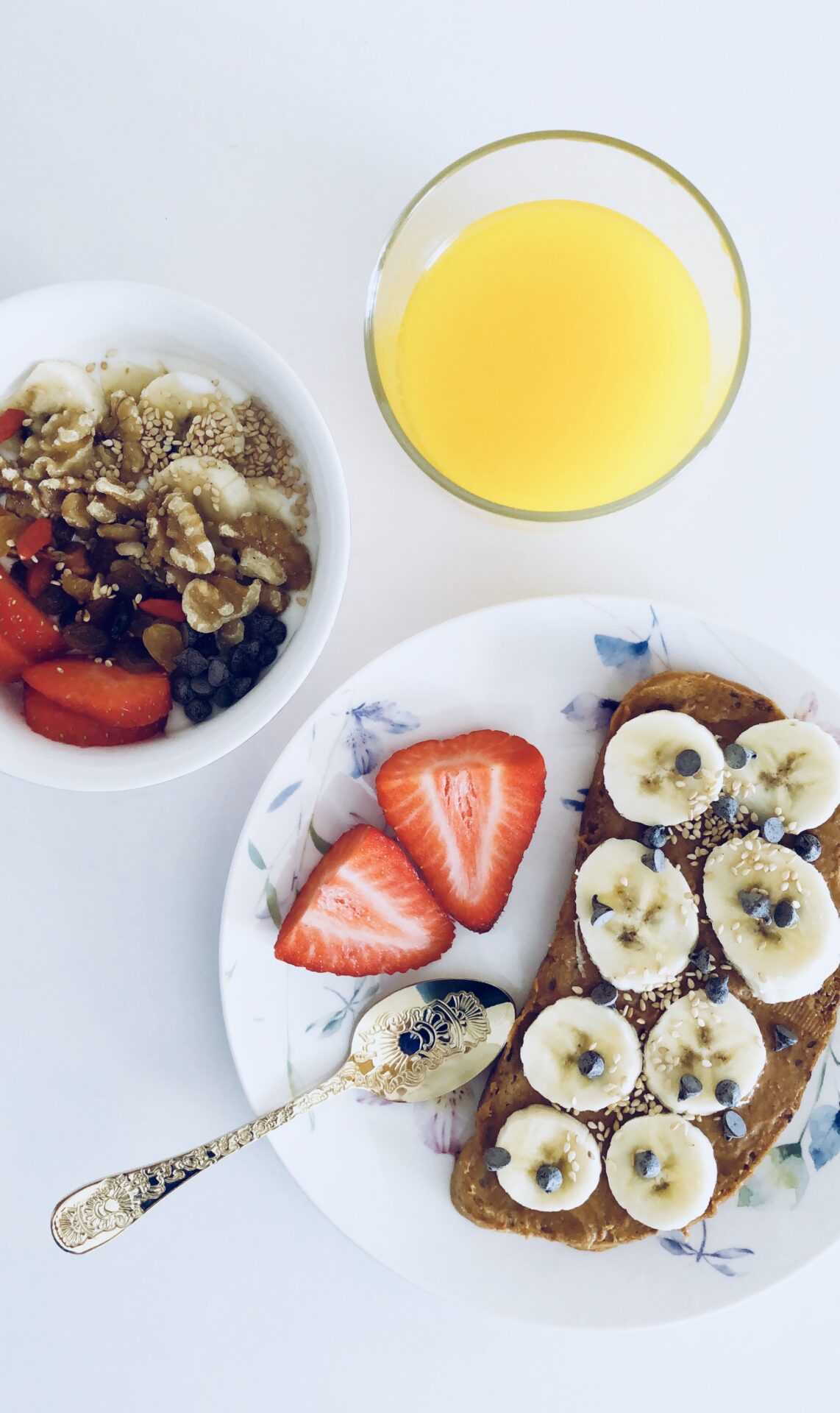Maintaining a healthy diet is crucial for overall well-being, but did you know that the balance of sodium and potassium in your diet plays a significant role in your health? While sodium is an essential nutrient, consuming too much of it can have detrimental effects on your heart health and blood pressure. Conversely, potassium is a vital mineral that can help counteract the negative effects of sodium, promoting healthy blood pressure and heart function. In this article, we will explore the importance of eating a low-sodium, high-potassium diet for a healthy lifestyle and provide tips on how to achieve this balance in your daily meals.
Understanding the role of sodium and potassium in the body
Sodium and potassium are two essential minerals that play crucial roles in maintaining overall health. Sodium is an electrolyte that helps regulate the balance of fluids in the body, while potassium is necessary for the proper function of cells, tissues, and organs.
Sodium is found in many foods and is often added during food processing. While the body needs some sodium to function properly, too much sodium can lead to health problems, including high blood pressure, heart disease, and stroke.
Potassium, on the other hand, is found in many fruits and vegetables, such as bananas, spinach, and sweet potatoes. It helps regulate the balance of fluids in the body, supports proper muscle and nerve function, and can help lower blood pressure.
Unfortunately, many people consume too much sodium and not enough potassium, which can lead to health problems. By understanding the roles of these two minerals in the body, you can make informed choices about your diet and take steps to improve your overall health.
The dangers of consuming too much sodium
Consuming too much sodium can have serious health consequences. When you consume too much sodium, your body retains water to dilute the excess sodium in your bloodstream, which can lead to high blood pressure. Over time, high blood pressure can damage your blood vessels, heart, and kidneys, increasing your risk of heart disease, stroke, and kidney disease.
In addition to these long-term risks, consuming too much sodium can also have immediate effects on your health. It can cause bloating, swelling, and fluid retention, which can be uncomfortable and even painful. It can also contribute to dehydration, especially if you’re not drinking enough water to balance out the excess sodium in your diet.
Unfortunately, many processed and packaged foods are high in sodium, making it easy to consume too much without even realizing it. This is why it’s important to be mindful of your sodium intake and choose low-sodium options whenever possible. By reducing your sodium intake, you can improve your overall health and reduce your risk of chronic diseases.
The benefits of a low-sodium diet
A low-sodium diet can have numerous health benefits, especially for those who are at risk of high blood pressure, heart disease, and stroke. By reducing your sodium intake, you can help lower your blood pressure, reduce your risk of heart disease, and improve your overall health.
One of the main benefits of a low-sodium diet is that it can help lower your blood pressure. When you consume too much sodium, your body retains water to dilute the excess sodium in your bloodstream, which can increase your blood pressure. By reducing your sodium intake, you can help your body maintain a healthy balance of fluids and lower your blood pressure.
A low-sodium diet can also help reduce your risk of heart disease and stroke. High blood pressure is a major risk factor for these conditions, and by reducing your blood pressure through a low-sodium diet, you can lower your risk of developing them.
In addition to these benefits, a low-sodium diet can also help improve your overall health. It can reduce your risk of kidney disease, improve your bone health, and even help you maintain a healthy weight.
Overall, a low-sodium diet is an important part of a healthy diet and can have numerous health benefits. By reducing your sodium intake and choosing low-sodium options whenever possible, you can improve your health and reduce your risk of chronic diseases.
The benefits of a high-potassium diet
A high-potassium diet can have numerous health benefits, especially when it comes to maintaining healthy blood pressure and reducing your risk of chronic diseases. Potassium is an essential mineral that helps regulate fluid balance, muscle function, and nerve impulses.
One of the main benefits of a high-potassium diet is that it can help lower your blood pressure. Potassium helps counteract the effects of sodium and can help relax the walls of blood vessels, which can reduce your blood pressure. Studies have shown that increasing your potassium intake can lower your blood pressure and reduce your risk of heart disease and stroke.
In addition to these benefits, a high-potassium diet can also help reduce your risk of developing kidney stones, improve bone health, and even reduce your risk of developing type 2 diabetes.
Foods that are high in potassium include bananas, sweet potatoes, spinach, avocados, and beans. By incorporating these foods into your diet, you can increase your potassium intake and improve your overall health.
Overall, a high-potassium diet is an important part of a healthy diet and can have numerous health benefits, especially when it comes to maintaining healthy blood pressure and reducing your risk of chronic diseases.
Foods that are high in potassium and low in sodium
Eating a diet that is high in potassium and low in sodium is an important part of maintaining a healthy diet and reducing your risk of chronic diseases. Potassium-rich foods can help counteract the effects of sodium and improve blood pressure, while low-sodium foods can help reduce your overall sodium intake.
Some foods that are high in potassium and low in sodium include:
Fruits:
– Bananas
– Oranges
– Cantaloupe
– Honeydew melon
– Mangoes
– Apricots
– Kiwi
– Papaya
– Prunes
Vegetables:
– Spinach
– Sweet potatoes
– Butternut squash
– Acorn squash
– Avocado
– Brussels sprouts
– Broccoli
– Carrots
– Cauliflower
Legumes:
– Black beans
– Kidney beans
– Lima beans
– Lentils
– Chickpeas
Dairy:
– Plain nonfat yogurt
– Skim milk
When selecting foods, it’s important to read food labels and choose options that are low in sodium and high in potassium. Fresh fruits and vegetables are generally good choices, as they are naturally low in sodium and high in potassium. Canned and processed foods, on the other hand, often contain high amounts of sodium and should be eaten in moderation.
Incorporating these potassium-rich foods into your diet can help improve your overall health and reduce your risk of chronic diseases.
Tips for reducing sodium intake and increasing potassium intake
Reducing your sodium intake and increasing your potassium intake are important steps in maintaining a healthy diet and reducing your risk of chronic diseases. Here are some tips to help you achieve these goals:
Reduce your sodium intake:
– Read food labels and choose low-sodium options whenever possible
– Avoid processed and packaged foods, which are often high in sodium
– Use herbs and spices to add flavor to your meals instead of salt
– Choose fresh fruits and vegetables instead of canned or frozen options
– Rinse canned foods, such as beans and vegetables, to remove excess sodium
Increase your potassium intake:
– Choose potassium-rich foods, such as bananas, sweet potatoes, and spinach
– Incorporate legumes, such as black beans and lentils, into your meals
– Snack on nuts and seeds, such as almonds and pumpkin seeds, which are high in potassium
– Drink coconut water, which is a natural source of potassium
– Use potassium-based salt substitutes, but always check with your doctor first if you have kidney problems or are taking medications
By following these tips, you can reduce your sodium intake and increase your potassium intake, which can help improve your overall health and reduce your risk of chronic diseases.
The impact of a low-sodium, high-potassium diet on blood pressure
Maintaining a healthy blood pressure is essential for overall health, and a low-sodium, high-potassium diet can have a significant impact on blood pressure levels.
Studies have shown that reducing sodium intake can lower blood pressure in people with high blood pressure, as well as those with normal blood pressure. Additionally, increasing potassium intake can help counteract the effects of sodium and lower blood pressure.
By following a low-sodium, high-potassium diet, you can help your body maintain a healthy balance of fluids and improve blood pressure levels. This can help reduce your risk of heart disease, stroke, and kidney disease.
It’s important to note that while a low-sodium, high-potassium diet can be beneficial for blood pressure, it’s not a substitute for other lifestyle changes, such as exercise and weight management. Additionally, some people may need medication to manage their blood pressure, so it’s important to talk to your doctor about the best course of action for you.
Overall, a low-sodium, high-potassium diet can have a significant impact on blood pressure levels and can help improve overall health. By incorporating potassium-rich foods and reducing sodium intake, you can take an important step towards maintaining a healthy blood pressure and reducing your risk of chronic diseases.
The Relationship Between Sodium, Potassium, and Heart Health
Research has shown that a diet high in sodium and low in potassium can increase the risk of heart disease. Sodium is known to raise blood pressure, which can put a strain on the heart and lead to cardiovascular problems. On the other hand, potassium helps to lower blood pressure and support heart health.
Studies have found that individuals who consume a diet high in potassium and low in sodium have lower blood pressure and a reduced risk of heart disease. This is because potassium helps to counteract the negative effects of sodium on blood pressure and cardiovascular health.
It’s important to note that the ratio of sodium to potassium in the diet is crucial for heart health. A diet that is high in sodium and low in potassium can have the same negative impact as a diet that is low in sodium and low in potassium. Therefore, it’s essential to focus on consuming a diet that is both low in sodium and high in potassium to maintain heart health.
Incorporating potassium-rich foods into your diet, such as bananas, sweet potatoes, spinach, and avocados, can help to support heart health. Additionally, reducing your intake of sodium-rich foods, such as processed and packaged foods, can help to lower blood pressure and reduce the risk of heart disease.
The Role of a Low-Sodium, High-Potassium Diet in Preventing Chronic Diseases
In addition to supporting heart health, a low-sodium, high-potassium diet can also help to prevent other chronic diseases. Research has shown that consuming a diet that is high in sodium and low in potassium can increase the risk of several chronic diseases, including:
Stroke
High blood pressure is a significant risk factor for stroke. Since sodium can raise blood pressure, consuming a diet high in sodium can increase the risk of stroke. On the other hand, potassium has been shown to lower blood pressure and reduce the risk of stroke.
Osteoporosis
Consuming too much sodium can increase the amount of calcium excreted in the urine, which can lead to osteoporosis. Potassium, on the other hand, has been shown to help maintain bone density and reduce the risk of osteoporosis.
Kidney Disease
High sodium intake has been linked to an increased risk of kidney disease. A low-sodium, high-potassium diet, on the other hand, has been shown to reduce the risk of kidney disease by improving kidney function.
Cancer
Although the relationship between sodium, potassium, and cancer is not fully understood, some studies have suggested that a diet high in sodium and low in potassium may increase the risk of certain types of cancer, such as stomach cancer.
Overall, consuming a low-sodium, high-potassium diet can help to reduce the risk of several chronic diseases. Incorporating potassium-rich foods into your diet, such as fruits, vegetables, and whole grains, can help to support overall health and prevent chronic diseases.





Leave a reply